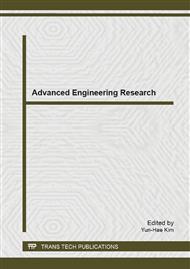p.309
p.313
p.318
p.323
p.327
p.331
p.336
p.341
p.345
Development of NdFeB Permanent Magnet Generator
Abstract:
Simple permanent magnet synchronous motor has the structure of reliable operation, small size, light weight, high efficiency, flexible shape and size and other characteristics. The pole surface of the rotor core is composed of several small magnet block arrays, spacing, width, height, and the magnet block arrays of magnetic blocks relationship between modulations. This paper introduces a development of NdFeB permanent magnet generator. Rotor structure of high-strength permanent magnet synchronous generator by the central shaft, attached to the core and its outer surface two pairs of circular arc-shaped magnets. The design of structures of the key components is demonstrated and the experimental results show the good performance of the generator.
Info:
Periodical:
Pages:
327-330
Citation:
Online since:
April 2014
Authors:
Keywords:
Price:
Сopyright:
© 2014 Trans Tech Publications Ltd. All Rights Reserved
Share:
Citation:


